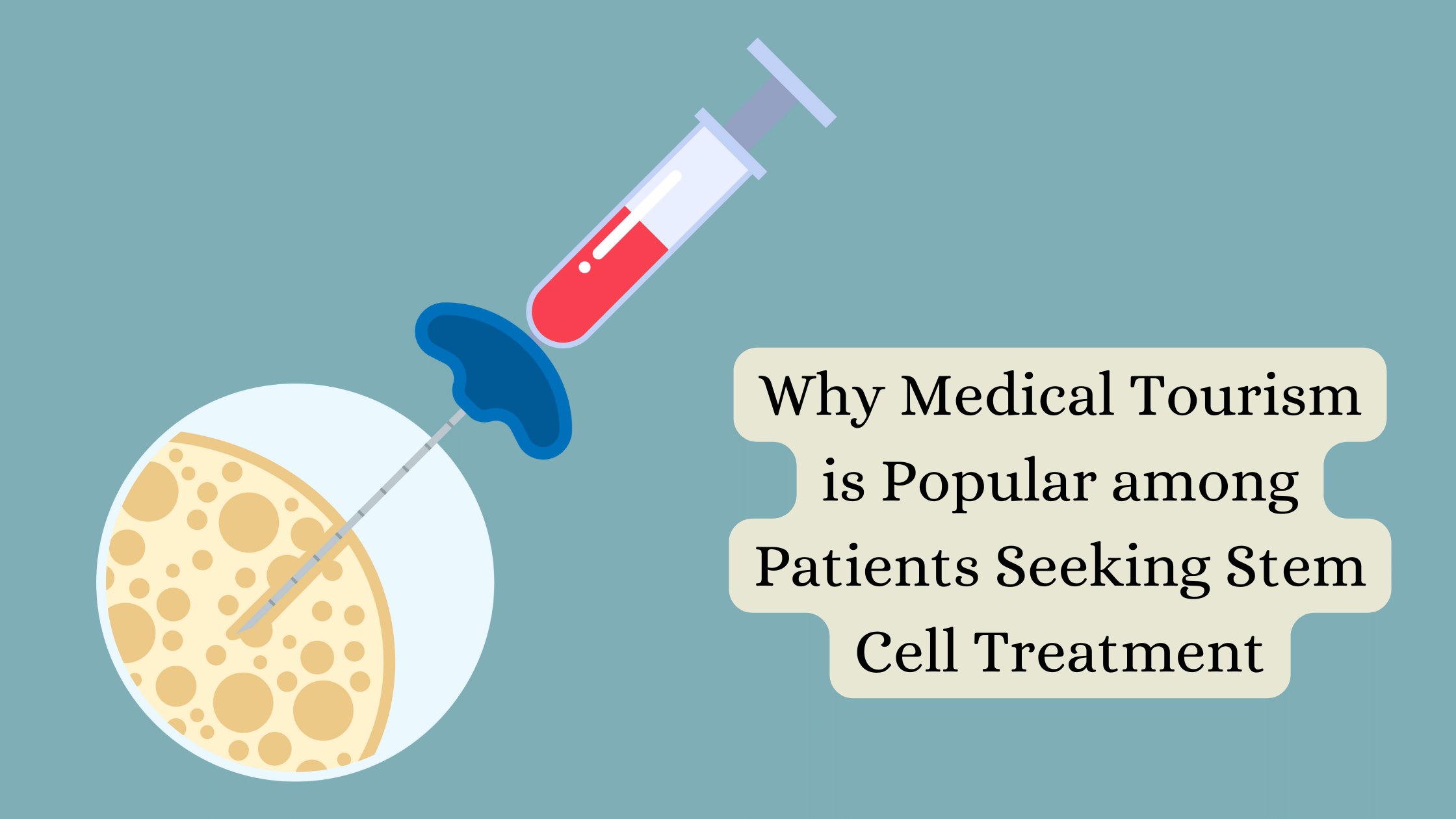
Every year, millions of patients travel abroad for procedures in the thriving field of medical tourism. The market has recovered quite quickly in the last few years, even with the chaotic slowdown amid the pandemic. As per Statista’s report, the value of the medical tourism market is expected to reach $111 billion by 2029, having achieved a staggering $47 billion in 2024. That’s more than double the number.
In the field of medical tourism, stem cell treatments are among the most popular treatments. Studies demonstrate how stem cells may be used to treat severe diseases like Parkinson’s disease, multiple sclerosis, stroke, and spinal cord injuries. These therapies are attracting people from all around the world who are looking for rapid and efficient treatment because of their potential.
In this article, we will explain the reasons for the popularity of medical tourism among patients seeking stem cell therapies.
Access to Cutting-Edge Treatment
All stem cell treatments in the US are subject to FDA regulation, limiting the options of American patients seeking help for severe conditions. The country may have a highly developed medical system, yet regulatory obstacles may make treatments difficult to obtain. With a recent statute that permits patients to get placental stem cell therapies that have not been approved by the FDA, the state of Utah contested the FDA’s jurisdiction.
Traveling abroad for these therapies is a much simpler option. Several destinations provide access to cutting-edge procedures that may not be available in the US. Take Mexico as an example. In 2022, 1.2 million Americans traveled to the country for medical care. The stem cell clinics in Mexico are well-known for their advanced treatments and high standards of care.
According to Beyond CellCare, Mexico is ranked second for these therapies. Its proximity to the US and Canada is another reason making it an attractive medical tourism destination for patients from these regions. International patients can expect innovative treatment that matches the world-class standards of their home countries.
Cost-Savings
According to Healthline, a stem cell transplant for multiple sclerosis can cost around $150,000. Moreover, treatment is often not covered by insurance because most therapies are not approved by the FDA. On the other hand, medical tourism markets offer them in the price range of $5000 to $100,000, as reported by Gitnux.
In Mexico, you can get the same treatment at a fraction of the cost. Therefore, cost consideration is the primary factor driving patients to seek stem cell treatment abroad. Lower treatment costs and affordable travel and accommodation expenses can save thousands of dollars. It is a financially viable choice for patients struggling financially with the burden of disease.
Shorter Waiting Times
Besides the stringent regulatory framework surrounding stem cell therapies in countries like the US, extended waiting time is another prohibitive factor. Long waiting times in the public healthcare systems of developed countries often prompt patients to seek medical tourism options overseas. Limited resources and high demand may make stem cell treatments less accessible as well.
In medical tourism destinations like Mexico, Singapore, Spain, and Japan, patients get the benefit of shorter waiting times. They can undergo stem cell therapy without delay, leading to better treatment outcomes and quality of life.
In some cases, timely treatment can be life-saving. The effectiveness of this therapy was demonstrated, for instance, by studies conducted at the City of Hope, where a 66-year-old HIV patient treated with a stem cell transplant went into HIV remission as well.
Privacy and Confidentiality
Medical tourism has emerged as the perfect response to the growing concern in the healthcare business about patient privacy and confidentiality. In addition to cutting-edge therapies and top-notch care, patients look for locations that respect their right to privacy. Many people looking for stem cell treatment prefer to do it away from their home environments.
They want to avoid the potential stigma associated with certain medical conditions treated with stem cell therapy. Many medical tourism destinations have a good reputation for valuing patient privacy. They offer discreet and personalized care in a supportive environment for effective healing and recovery. Patients feel comfortable about getting quality care away from the prying eyes of people they know.
In conclusion, patients seeking stem cell treatment have valid reasons to opt for medical tourism, regardless of the country they come from. While accessibility and cost-savings are the primary factors making it an attractive option, the advantages of privacy and confidentiality are a bonus.
However, anyone looking for a stem cell therapy destination abroad must conduct thorough research, check the clinic’s credentials, and consider potential risks before going ahead with the procedure. An informed decision ensures a positive outcome and peace of mind.